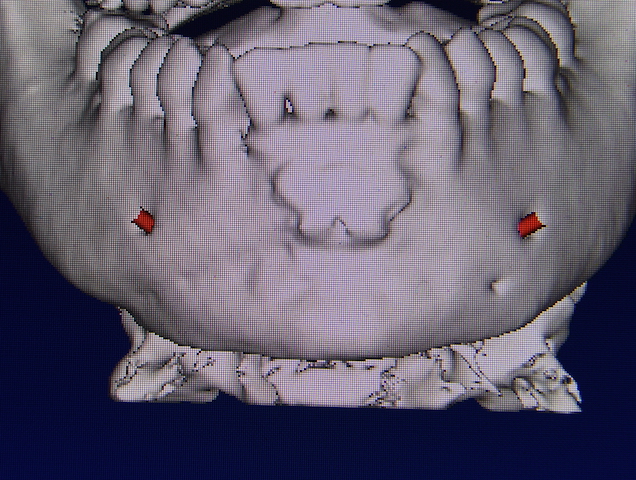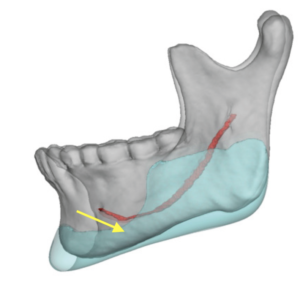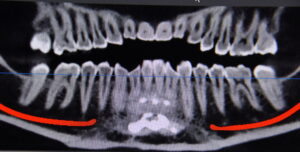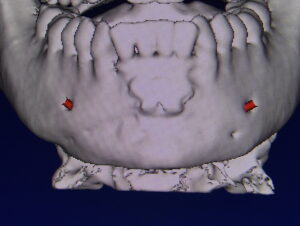
It has long been acknowledged that the inferior alveolar nerve loops inferiorly and emerges superiorly to exit the bony foramen. As a result it is known that the lateral osteotomy cut of the sliding genioplasty should extend at least 5mms below the mental foramen and the visible nerve exit to prevent inadvertent nerve injury from the osteotomy line. A new paper on this topic is interesting is whether it presents any new insights into the bony genioplasty technique,
In the October 2020 issue of the journal Plastic and Reconstructive Surgery an article on this topic was published entitled ‘Avoiding Inferior Alveolar Nerve Injury during Osseous Genioplasty: A Guide for the Safe Zone by Three-Dimensional Virtual Imaging.’ In this paper the authors analyzed over 300 patients from various occlusal angle types using CT derived 3D models of the vertical distance between the inferior margin of the mental foramen and the west point of the inferior alveolar nerve canal. Statistical analysis was used to determine the safe distance for the osteotomy cut of the boy genioplasty.
Their results showed that Class III and cleft lip and palate patients have greater vertical distances between the foramen and the inferior location of the nerve canal than Class I and II occlusal relationships. ( 4.4mms vs 3.4/3.6mms) But variations exist in which lower nerve canal positions exist. Based on this analysis they suggest that the safest placement of the osteotomy line should be 9mms below the mental foramen. For some patients with low mental foramen levels this may necessitate a change in the osteotomy pattern from a horizontal pattern into a V- or U-shaped pattern.
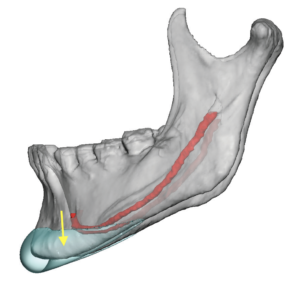
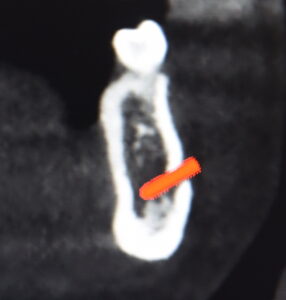
While it is clear that the lower the osteotomy line the greater is the margin of safety for the nerve, great variability exists in how the nerve exits the bone. Rather than using a standard ‘safe distance’ for the level of the osteotomy cut for everyone, each patient should be preoperatively evaluated by a cone beam or CBCT scan of the mandible to determine where their inferior alveolar nerve is in the bone and how it exists the mental foramen. Such scans today are very low cost and should be considered for every patient undergoing a bony genioplasty of any dimensional change.
Dr. Barry Eppley
Indianapolis, Indiana

